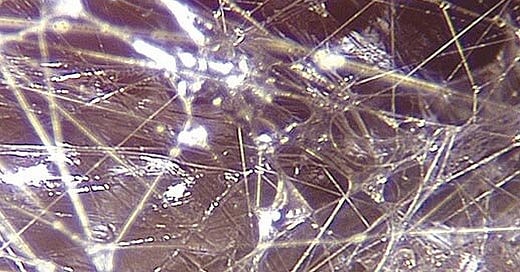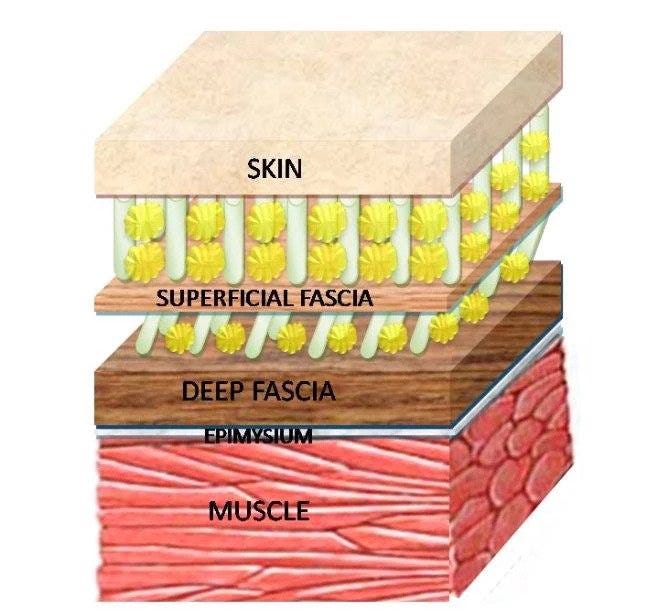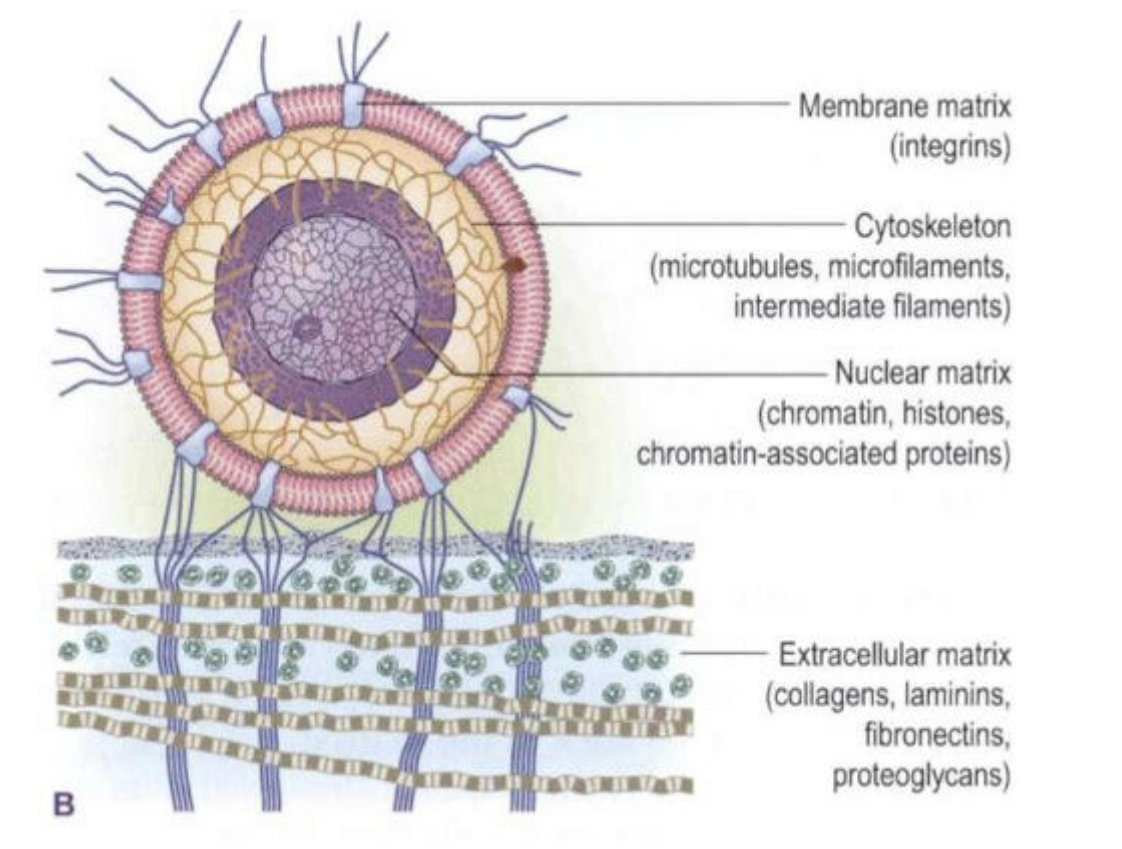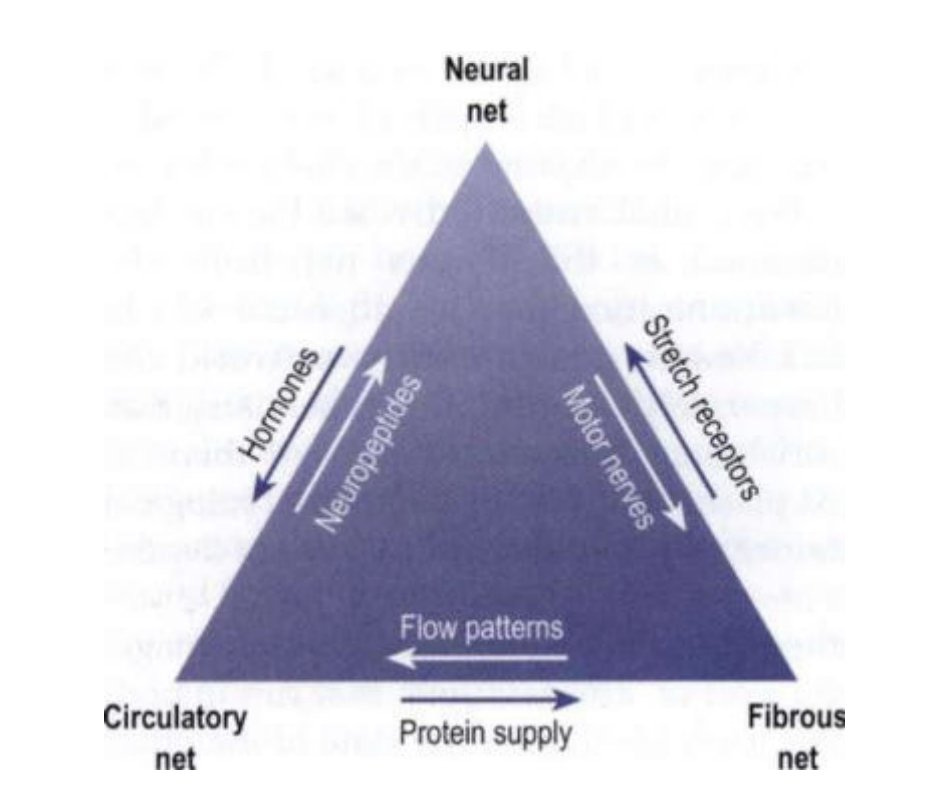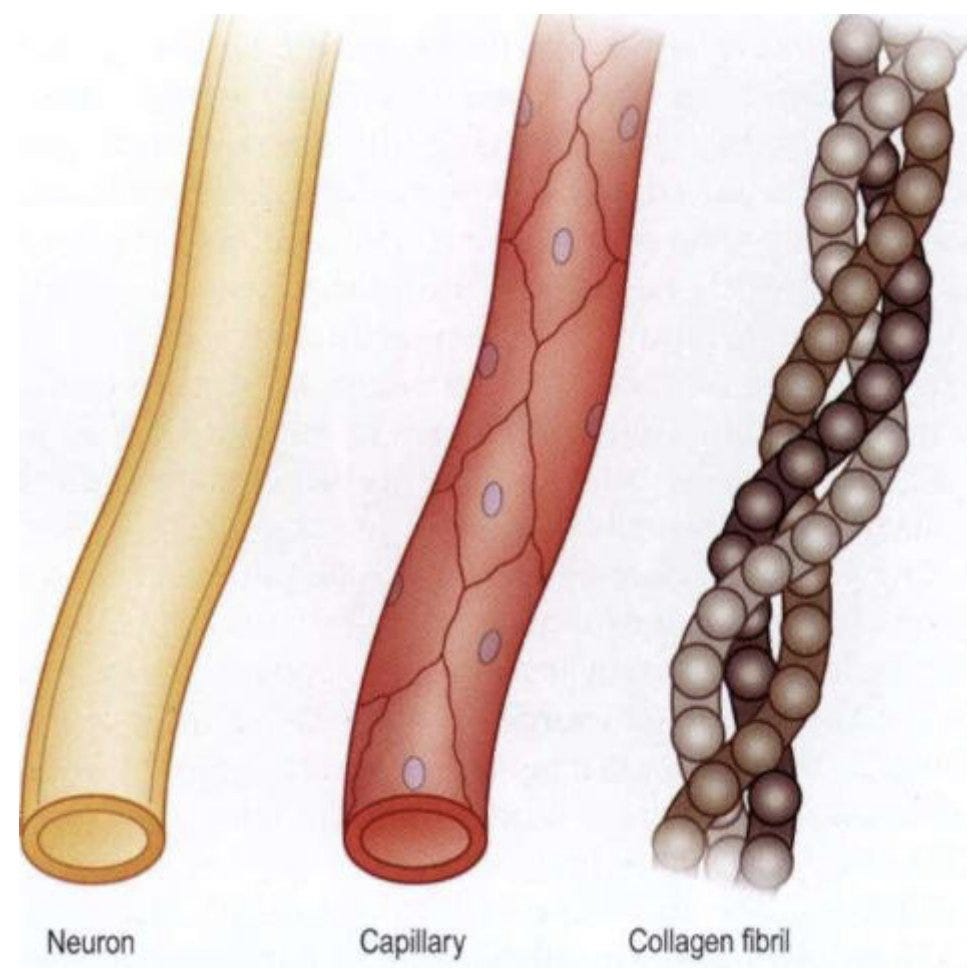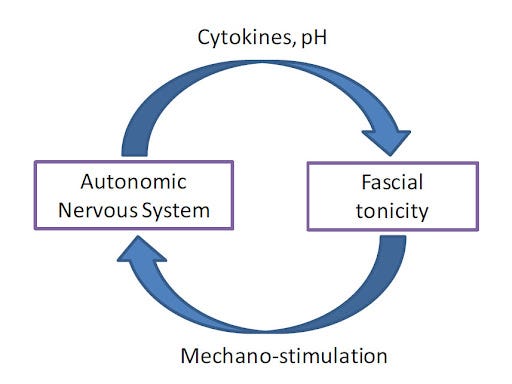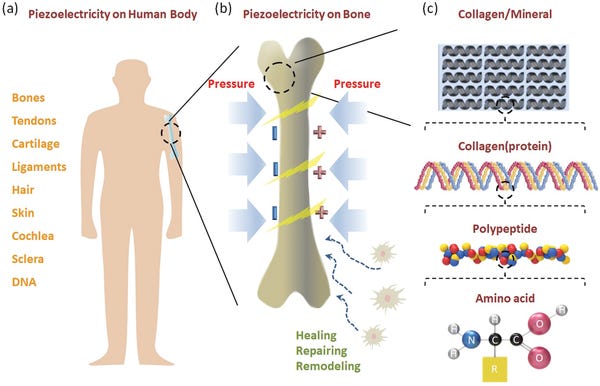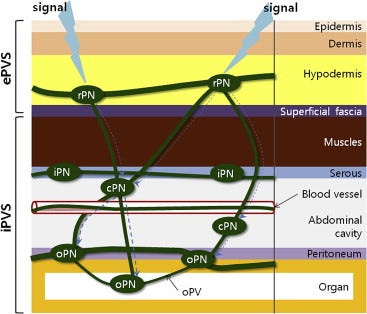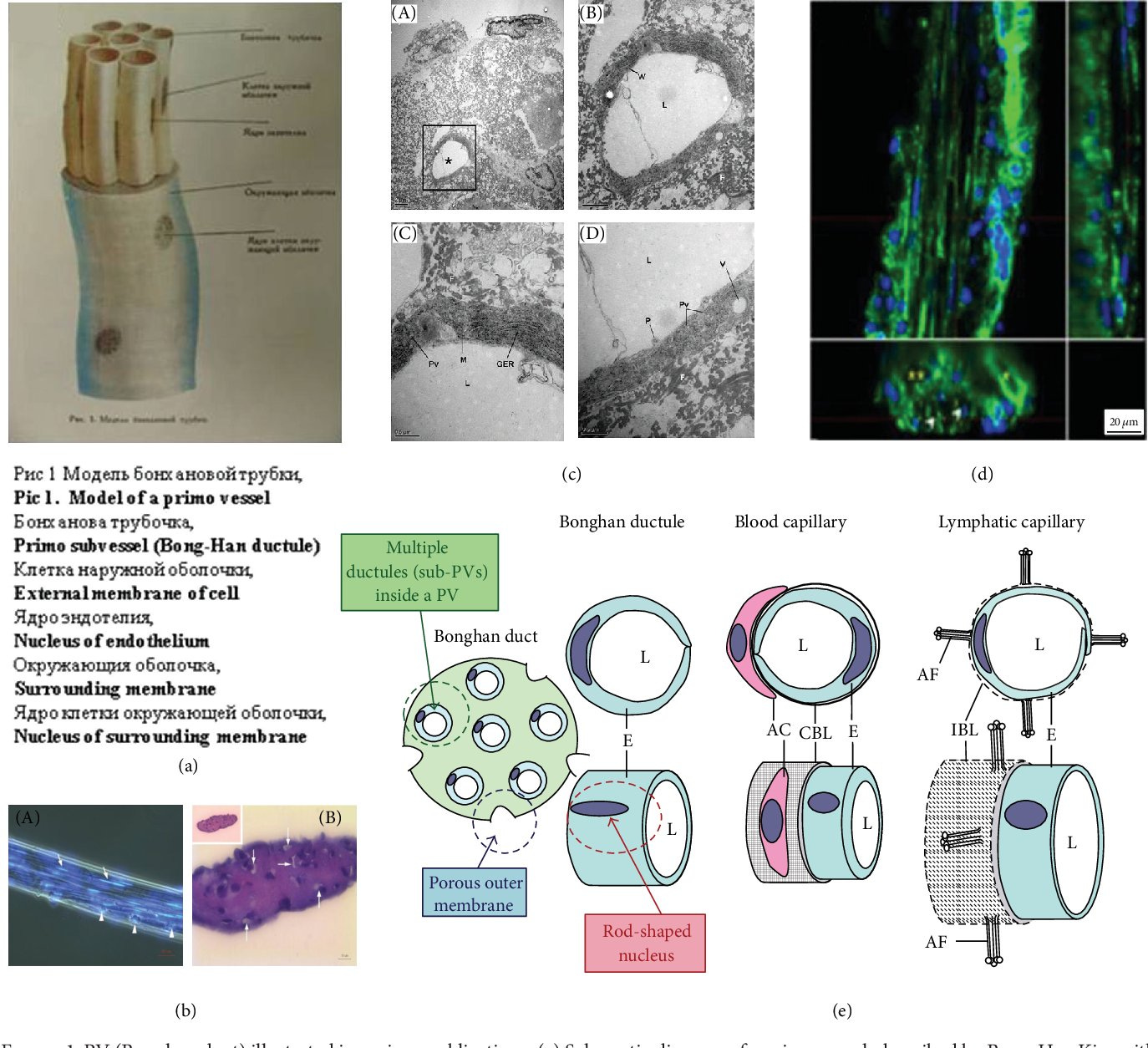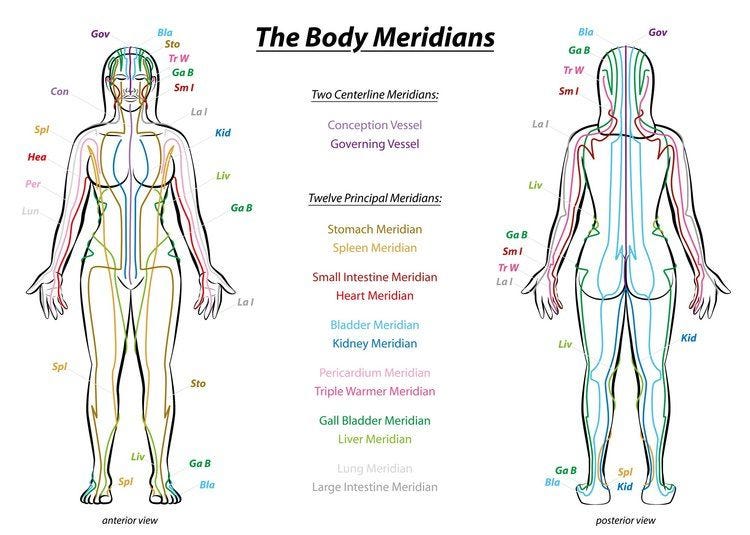Fascia is often thought of as simply being an inert wrapping for muscles/organs, perhaps because dissection and study rarely happens in living organisms. In reality, it is an essential energetic, sensory, and nutrient-delivery organ. This includes mechanical proprioception, autonomic innervation, electron/biophoton conduction, and stem cell propagation. Combined, this makes fascia one of the most important tissues in the body.
Classically, fascia is understood for its structural role in anatomy. It wraps, divides, connects, and protects various organs. This allows for tissues to slide/move over one another without catching. Given that muscles (and other organs) are often overlapped atop one another, the seamless gliding is essential for sound and supple movement.
Additionally, fascial tissues help produce what is known as tensegrity, a combination of tension and compression. Living organisms use bone, fascia, muscle, and other connective tissue to form a continuous tensile network. This is adaptable, decentralized (yet still interconnected), and able to distribute energy throughout the entire system. Energy can be transferred and dispersed across the whole body, promoting balance, efficiency, and power.
Fascia is not strictly bound to individualized wrappings, but connects nearly all tissues and organs together as well. Even cells are connected to larger fascial structures because of the presence of specialized proteins known as integrins. This means that physical changes to the body are not only felt by organs but individual cells as well.
While these physical and structural roles are certainly important, they are only the tip of the iceberg for the fascia. One of the most interesting aspects of fascia is to communicate information on the position of the body via tension within collagen fibrils. Mechanical information is transmitted instantaneously and can then be communicated to the neuromuscular and circulatory systems as well as individual cells. This information is interpreted by the nervous system and helps to support the necessary physical, hormonal, and metabolic adaptations.
Fascia is a two-way interface for the autonomic nervous system. Parasympathetic (rest and digest) tone causes contractile cells (myofibroblasts) to relax, an effect that can be induced with gentle massage. Sympathetic tone causes these cells to contract and harden, possibly an attempt to brace or protect. Other factors such as pH, dependent on local metabolism, can cause this same reaction. Autonomic balance and metabolism can contribute to fibrosis and chronic hardening of the tissue over time.
The collagen fibrils that make fascia are also conductors of electrons, helping to maintain the conductivity of tissues and ferry energy throughout. At the same time, fascia is piezoelectric, helping to create an electric charge through movement alone. The compression, contraction, and gliding of fascia all help to produce this charge as movement can produce small amounts of energy. This energy can be used for cellular processes and/or maintaining membrane gradients. Movement literally charges you.
Collagen is also able to tune light emitted by and within an organism. Known as biophotons, light is used to communicate metabolic information at unmatched speeds. The fascia then also functions as a fiber-optic channel that propagates these photons throughout the entire body. Light also travels through the extracellular matrix (ECM) within fascia.
Similarly, fascia and some of its constituents are thought to perpetuate electromagnetic fields as well. Since every cell emits an electromagnetic field that fluctuates based on its state, this information is valuable at the level of the cell, tissue, organ, and eventually organism.
Fascia is also the medium for a nutrient delivery system that develops prior to the nervous system in the embryo. The primo-vascular system (PVS) is a network of translucent vessels and nodes that ferry stem cells and other nutrients to all tissues in the body. These are among the first structures to form in the embryo, even prior to the nervous system. This suggests that they play a foundational role in biology.
Fascia and the PVS offer an anatomical basis for the ancient concept of energy meridians that carry "Qi" (electrons/photons) through the body. Fascia aligns with these meridians with striking accuracy. Stimulation of these points can induce instantaneous and systemic effects which, given fascia’s numerous sensory and connective roles, makes sense.
There are many ways to care for your fascia, most of which are simple and indirect. Some of these include getting plenty of sunlight, grounding yourself, whole body movements like walking, slowing your breathing rate, eating easily digestible foods, essentially anything you enjoy. If it feels good to you, it is probably good for your fascia.
Other means to directly target your fascia include PEMF devices, infrared light therapies, microcurrent, massage, and acupuncture. Each of these therapies can improve the physical and energetic properties of the tissue through different pathways. Enhancing metabolism, providing mechanical stimuli, and more.

